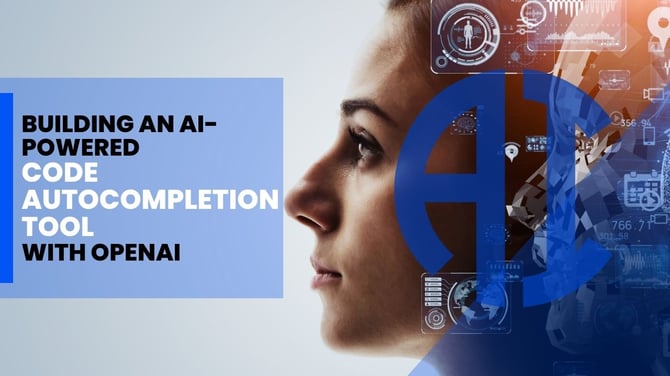Building an AI-Powered Code Autocompletion Tool with OpenAI
Unlock coding efficiency with an AI-powered code autocompletion tool using OpenAI's GPT-3. This article provides concise information to set up, make API calls, and integrate the tool into your IDE. Explore the synergy of AI and human creativity for enhanced coding productivity.

In today's fast-paced world of software development, efficiency and productivity are paramount. Developers are constantly seeking ways to streamline their workflow and write code more efficiently.
OpenAI plays a significant role in software development by providing advanced artificial intelligence (AI) technologies. Notably, OpenAI's models, such as GPT-3, are employed for natural language understanding and generation, aiding in tasks like code autocompletion.
Developers leverage OpenAI's tools to enhance productivity, streamline workflows, and explore innovative applications across the software development landscape.
One breakthrough that has revolutionized the coding experience is the integration of AI-powered code autocompletion tools. In this article, we will explore how to build such a tool using OpenAI's cutting-edge technology.
The Power of OpenAI in Code Autocompletion
Code autocompletion, a feature present in most modern Integrated Development Environments (IDEs), suggests code snippets, function names, and variable names as developers type. AI-powered autocompletion takes this to the next level by providing contextually relevant code suggestions based on the code that's already been written.
OpenAI, a leader in artificial intelligence research, offers a technology called GPT-3, which stands for Generative AI Development. It is a state-of-the-art language model capable of understanding and generating human-like text. Leveraging GPT-3, we can create a code autocompletion tool that understands programming languages, context, and developer intentions.
Building the AI-Powered Code Autocompletion Tool
1. Setting Up Your Development Environment
Before diving into code, you'll need to set up your development environment. Ensure you have Python installed, and then install the OpenAI Python package, which provides a simple interface for interacting with GPT-3. You'll also need an OpenAI API key, which you can obtain from the OpenAI website.
2. Define the Input
To use GPT-3 for code autocompletion, you'll need to provide it with a prompt that describes the current code context and the desired autocompletion. For example:
3. Make the API Call
Once you have your input prompt, you can make an API call to GPT-3 to generate code suggestions. Here's an example using Python:
In this example, we use the `text-davinci-003` engine, set the maximum number of tokens (code snippets) to generate, and adjust the temperature to control the randomness of the output.
4. Parse and Present Suggestions
After receiving a response from GPT-3, you can parse the suggestions and present them to the developer within your code editor. You might want to filter the suggestions for relevance and code quality before displaying them.
5. Integration into Your IDE
To make the autocompletion tool truly valuable, you should integrate it into your preferred IDE or code editor. Most modern editors have extension systems that allow you to create custom autocompletion plugins. You can also explore open-source projects that have already implemented AI-powered autocompletion and adapt them to your needs.
How We Can Help
In the ever-evolving world of software development, AI-powered code autocompletion tools are becoming essential for enhancing productivity and reducing coding errors. OpenAI's GPT-3 technology provides a powerful way to build such tools, offering contextually relevant code suggestions.
Signity Solutions specializes in ChatGPT Development & Integration and Generative AI Development services. We assist you in harnessing the potential of AI-powered autocompletion tools. By following the steps outlined in this article and leveraging our expertise, you can create your own AI-powered code autocompletion tool and streamline your development workflow like never before.
Are You Looking for AI Development Services?
Get custom solutions and recommendations as per your unique business requirements!
Remember that while AI can provide valuable suggestions, it should always be used as an aid to human creativity and expertise. Building and fine-tuning your autocompletion tool is an ongoing process that requires continuous improvement and testing to ensure its effectiveness and accuracy.
With the right approach and Signity Solutions' support, you can harness the power of AI to become a more efficient and productive developer.


%201-1.webp)


.png?width=344&height=101&name=Mask%20group%20(5).png)
















